Before an artifact or antiquity reaches Colonial Williamsburg’s Historic Area or our Art Museums, it is analyzed, examined, treated, and documented by a team of conservation professionals, interns, and volunteers. The Conservation department, which includes eight discipline-specific labs, a materials analysis lab and a Preventive conservation group, perform their duties in strict accordance with the Code of Ethics of the American Institute for Conservation of Historic & Artistic Works.
Housed in a 75,000-square-foot, state-of-the-art building on the Bruton Heights campus, conservators work hand in hand with curators to preserve the cultural property in the Colonial Williamsburg collections.
Learn more about each of the labs:

Archaeological Materials
Recognizing the importance of local archaeological evidence to the accuracy of the reconstruction of Williamsburg, conservators of archaeological materials have been part of the Colonial Williamsburg Foundation since the 1930’s. The current Archaeological Materials Conservation Laboratory continues this work by stabilizing recovered objects, slowing their deterioration, and providing as much information as possible to archaeologists to help them better understand the site and the way it was used. Archaeological conservation is a collaborative process in which the object-based research complements and is informed by the work on the site itself.

Material Analysis
The newest addition to the Conservation Department, The Materials Analysis Laboratory houses a suite of advanced instruments dedicated to the scientific analysis of materials in the collection, to better understand their composition, methods of manufacture, condition, or history of repair.
In addition to analysis, the lab is responsible for the conservation of painted objects that fall outside the categories of furniture or paintings. These can include painted furniture, architectural surfaces or folk art.
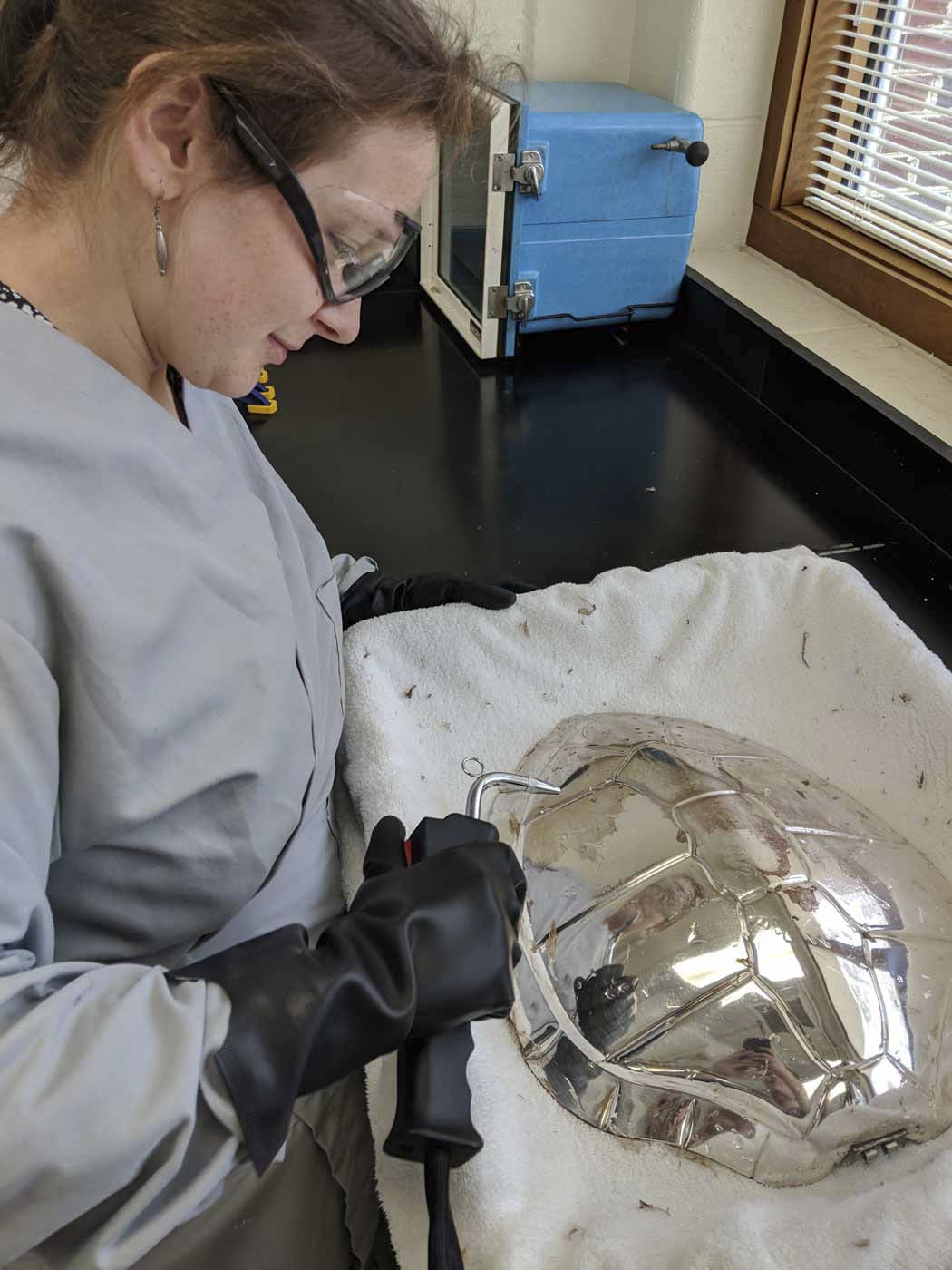
Objects Conservation
The Objects Conservation Laboratory is responsible for a broad range of decorative and mechanical arts such as metalware, ceramics, glassware, basketry, jewelry, armor and weapons as well as folk Art objects including sculpture, weathervanes, signs and toys. The numerous tables and benches in the large, two-room lab space are configured to accommodate items as diverse as a silver teaspoon and a five-hundred-pound ship’s figurehead. Specialized work lamps provide lighting conditions that match those in the museum's galleries, ensuring that the work done in the lab appears correct while on view to the visitor.
Read more about a recent treatment process on a staff favorite here.
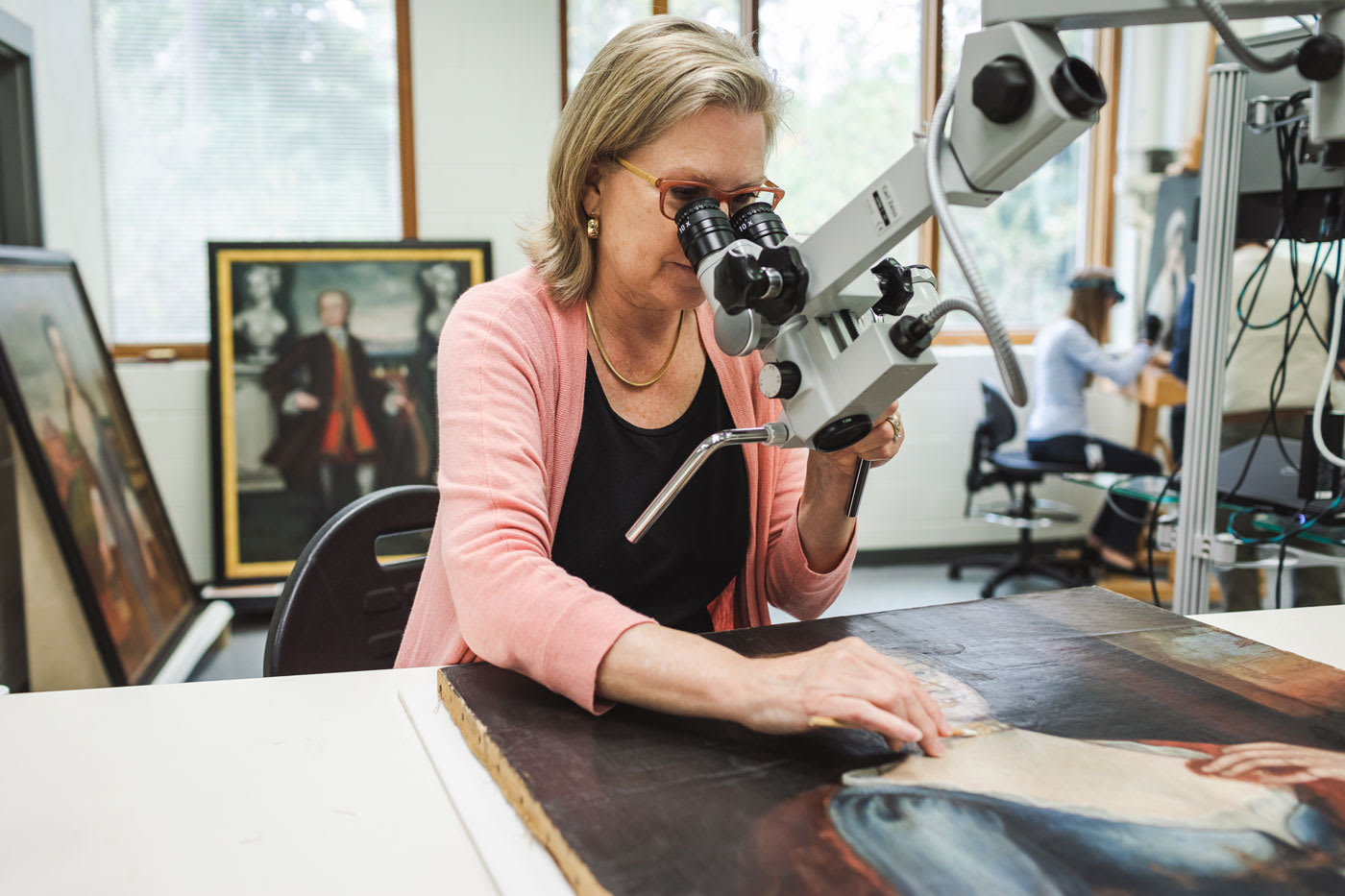
Paintings Conservation
The Paintings Conservation Laboratory is responsible for Colonial Williamsburg’s collection of paintings, primarily from the American Colonial and Early National periods and including works of the same date from the United Kingdom and Europe. There are also diverse 18th century to present American folk art paintings. The paintings lab accommodates treatments that require working in both horizontal and vertical orientations. Several tables support moisture treatments and some structural work while easels assist with viewing vertical work from different angles during treatment. In addition, a vacuum hot table enables the application of controlled even heat and pressure to do additional structural work. Microscopes in the lab allow both close examination of a painting’s surface and scrutiny of samples that can inform treatment.
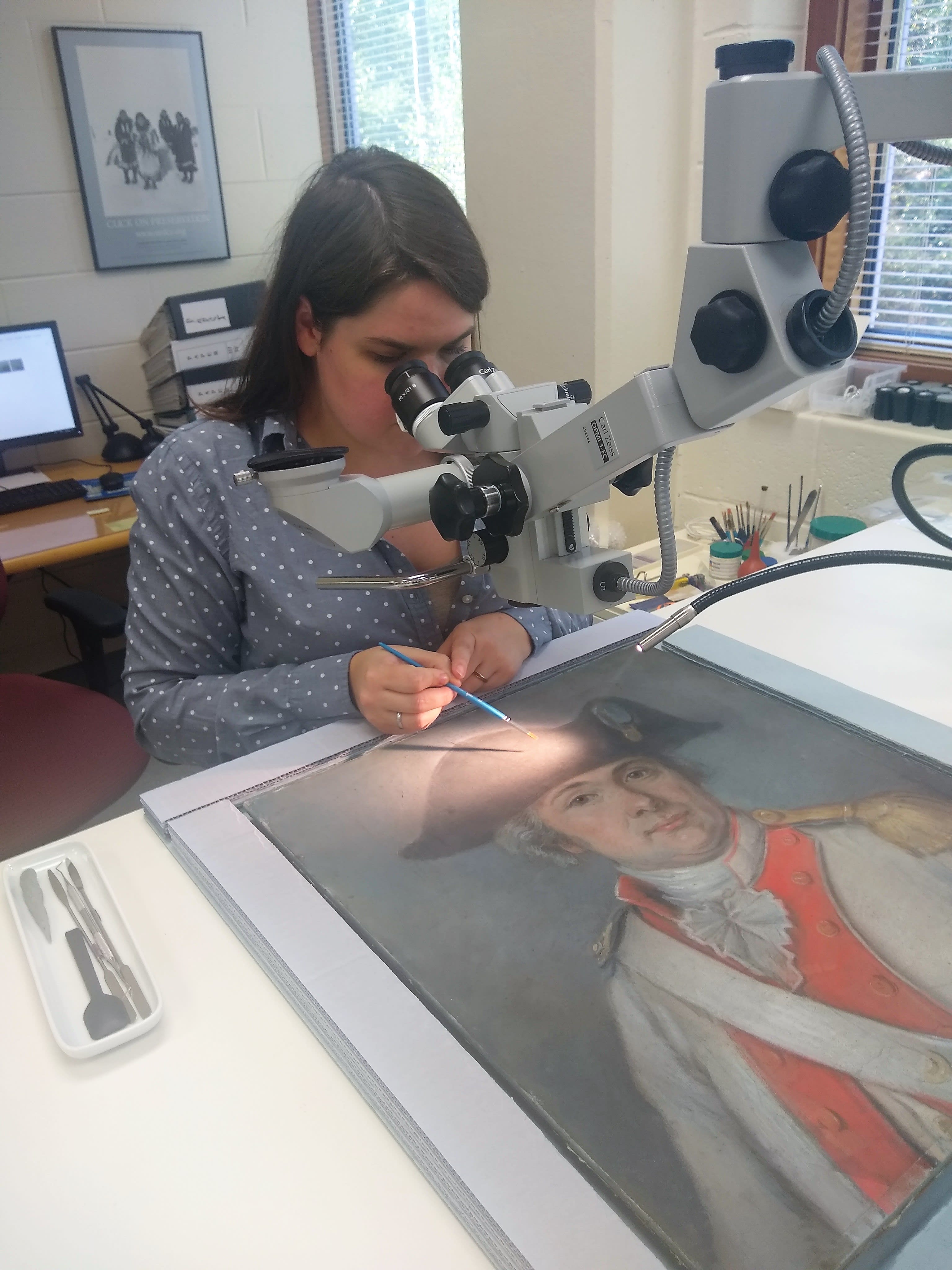
Paper Conservation
The Paper Conservation Laboratory treats works on paper in the decorative arts collection, folk art collection, and special collections at the John D. Rockefeller Library. The range of artifacts includes prints, maps, wallpaper, watercolor paintings, drawings, manuscripts, and architectural drawings and models. The spacious, well-lit lab includes several large work surfaces that can accommodate numerous simultaneous projects. Specialized equipment includes moveable and stationary fume extraction, portable stereomicroscopy, and a suction table for bathing water-sensitive works on paper, with a plastic dome for sheet humidification prior to drying.
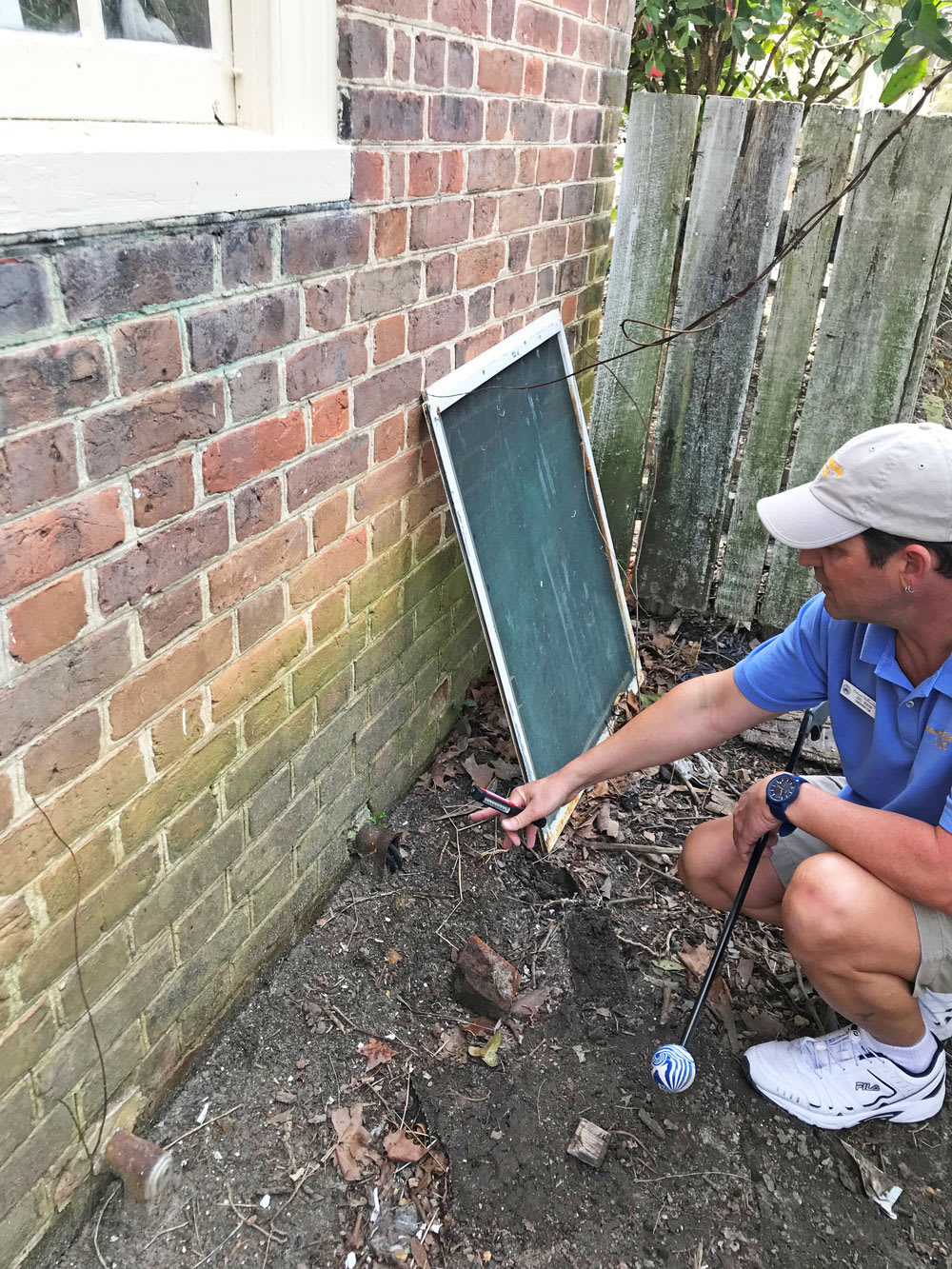
Preventative Conservation
Light, humidity, temperature, pollutants, pests and even humans themselves can cause objects to deteriorate. While conservators often have difficult challenges in stabilizing objects once they are damaged, they also set great store by the adage that “an ounce of preservation is worth a pound of cure” and put an equal amount of effort into trying to prevent damage from occurring in the first place.
At Colonial Williamsburg, much of this work is carried out by the Preventive Conservation Team, which includes the Historic Interior Collections Care (HICC) staff. Their primary work is done outside the lab: in Historic Area buildings, the Art Museums of Colonial Williamsburg and collections storage areas. They clean, check for pests and track environmental conditions such as humidity, temperature and light levels. They work with the Historic Architectural Resources department to ensure that all is well in the historic structures and collaborate with Facilities Maintenance to ensure that the best possible environment is maintained in Colonial Williamsburg’s historic houses and museums. They make realistic artificial food to use on historic tables, enabling the Foundation to talk about foodways in the past without attracting pests in the present! Preventive Conservation Team members also help curators install exhibits and design and build customized containers to protect objects in storage or when shipping loans to other museums.
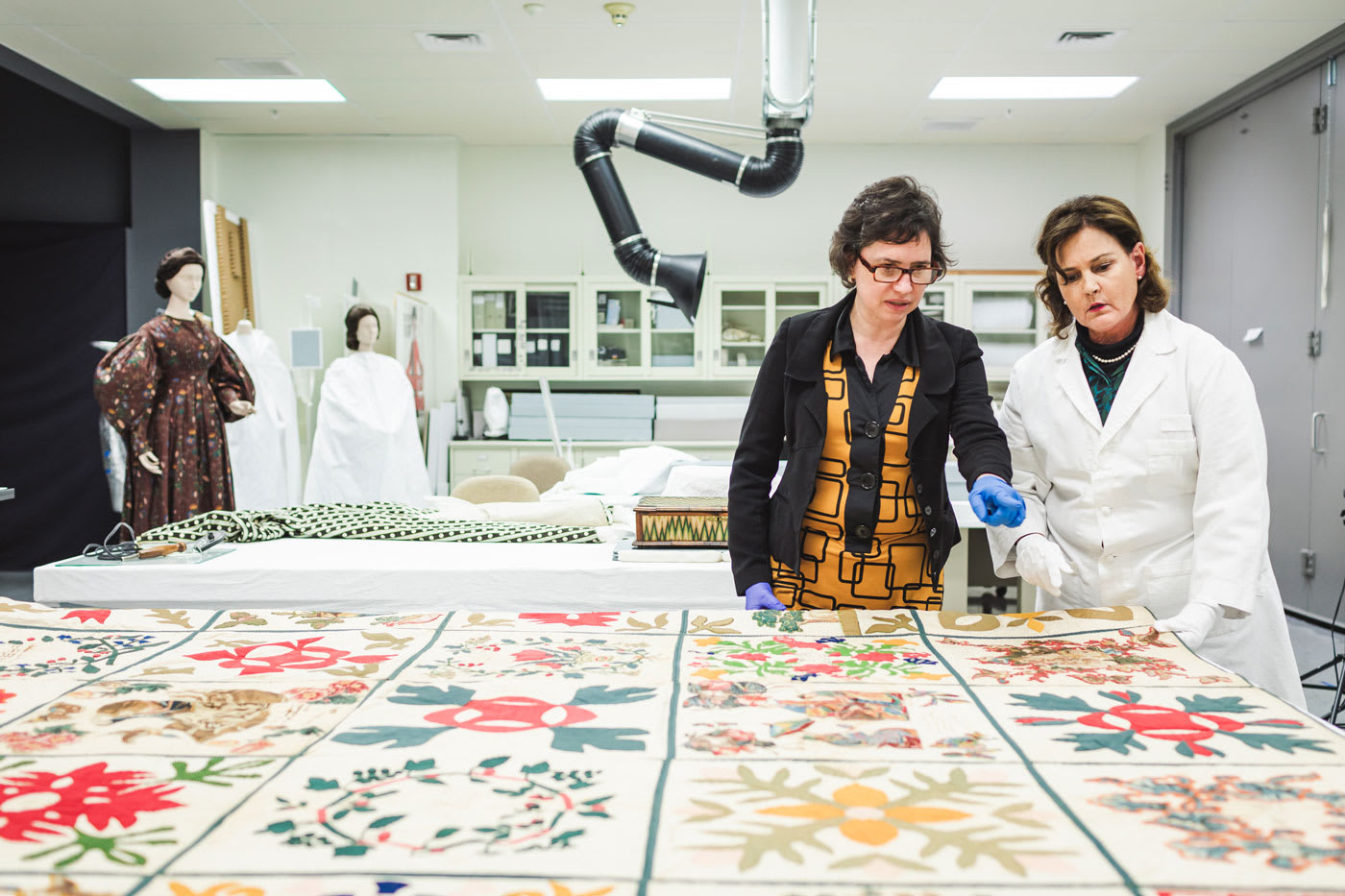
Textiles Conservation
The Textile Conservation Laboratory treats a wide range of collections objects made from fabrics. These include costumes, samplers and needlework pictures, quilts and coverlets, printed textiles and home furnishings such as curtains and carpets. Typical treatments involve examining the object, cleaning it, stabilizing (or supporting) it and preparing it for storage or display. Because many of the textiles in Colonial Williamsburg’s collections are very large and must be treated lying flat, this lab is the largest dedicated space among the conservation labs. The bulk of the lab space is occupied by large flat surfaces which can be partially disassembled to allow access to specified areas of the object being treated while still providing support for the entire piece.
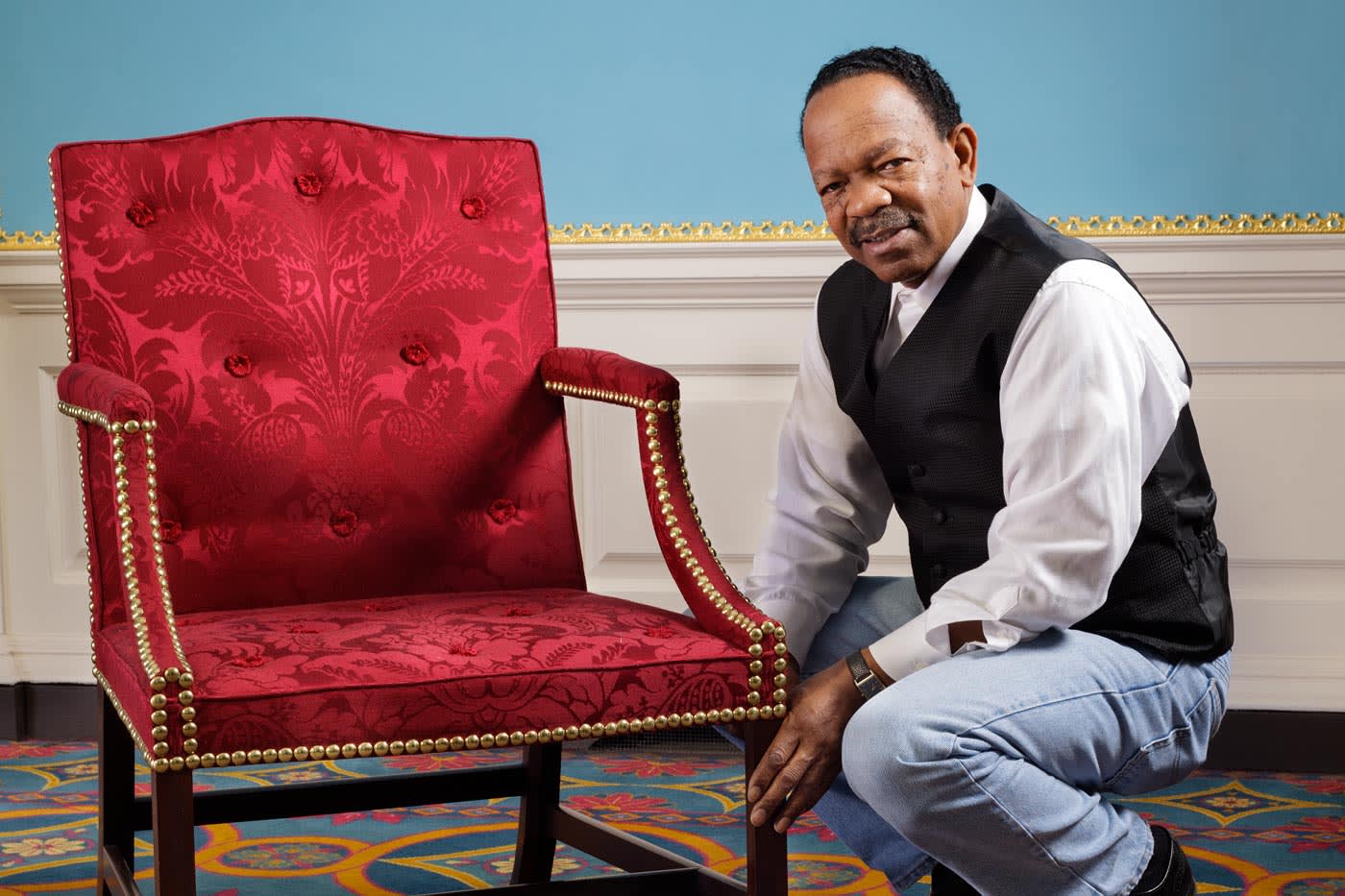
Upholstery Conservation
The Upholstery Conservation Laboratory provides analysis, documentation, and the appearance of historically accurate upholstery for the Foundation’s collection of furniture. The frames of upholstered furniture often retain information about the original fabric that was used, the number of times the item was upholstered, and the way in which the upholstery was attached, even after the piece has been reupholstered. The clues can be small (tiny pieces of fabric caught in tack holes) or large (the patterns that nail holes make as they sweep across the piece). The challenge for the lab is to save the original evidence while still presenting the piece as it once would have looked.
Colonial Williamsburg’s conservators have developed a non-intrusive upholstery system. The fabric covering looks as it should, and retains the evidence beneath.
You can explore these clues yourself and see this technique in action at the award-winning exhibition at The Art Museums of Colonial Williamsburg called Upholstery CSI: Reading the Evidence.
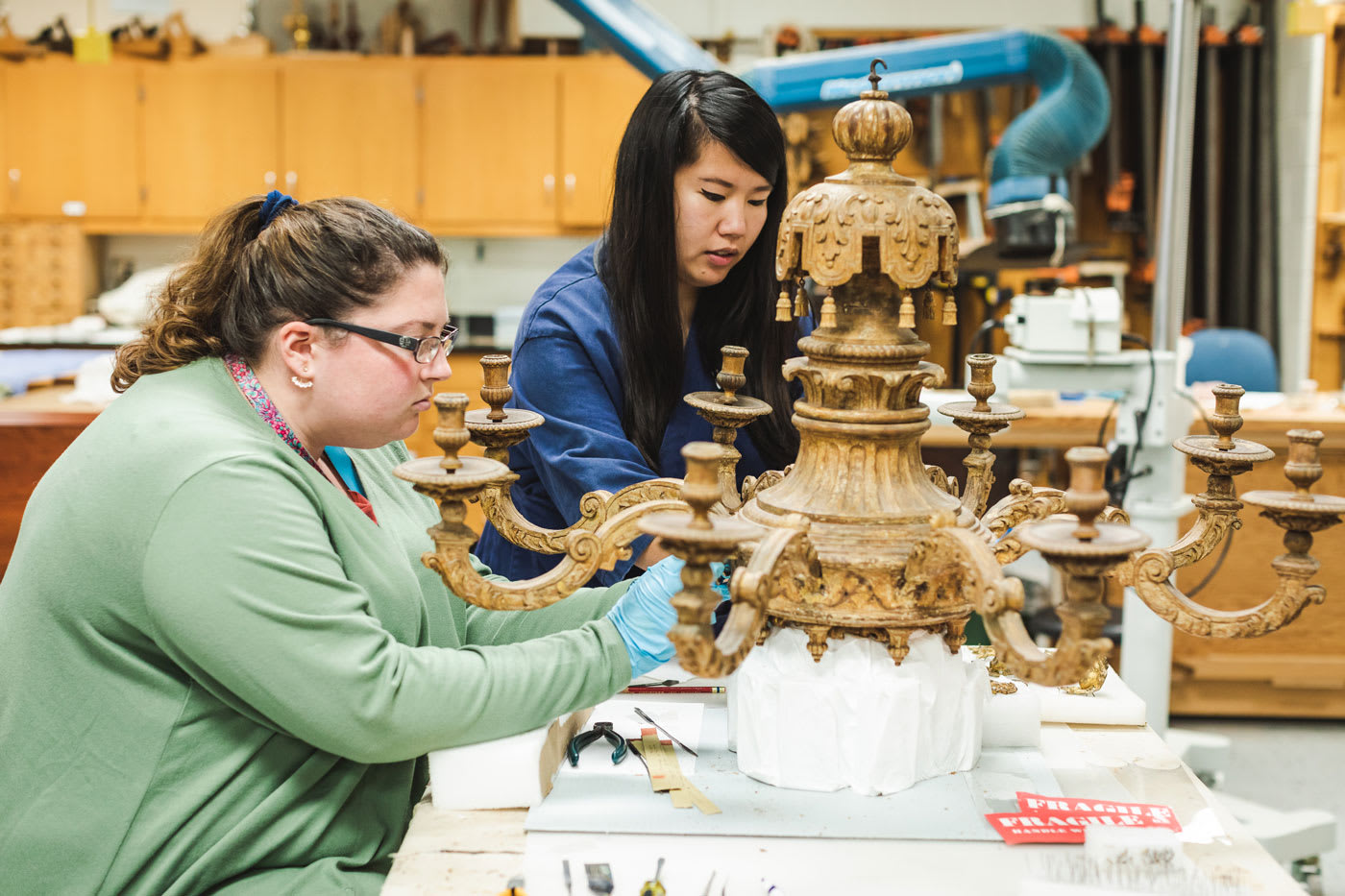
Wooden Artifacts
The Wooden Artifacts Conservation Laboratory studies and treats furniture and other objects primarily composed of wood from the decorative and folk art collections. These objects include joined, carved, painted, and gilded furniture, architectural fragments, household accessories, picture frames, and folk art. The lab is a large well-lit space with five free standing workbenches and fume extraction capabilities. In addition, there are a full modern woodshop and chemical storage/spray booth in separate rooms.
Support Our Work
The Colonial Williamsburg Foundation relies on the generosity of guests and donors like you. Help us preserve this national treasure and our collections for future generations.
Give Now